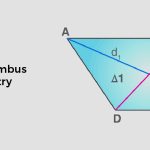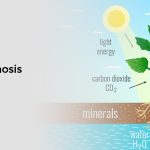Adenosine triphosphate (ATP) is essential for life on Earth, and it plays a vital role in powering almost every cell-level process imaginable. ATP does this by releasing energy when the last phosphate bond is broken, providing us with an immediate source of fuel that our cells can use to power processes like muscle contraction and photosynthesis. But how exactly does ATP release energy? Is there a specific point at which its stored energy is unleashed? That’s what this blog post will explore – we’ll dive deeply into the science behind ATP’s energy production so you can better understand how it works!
What is ATP? – Adenosine Tri Phosphate
ATP is an organic compound that provides energy for various biological processes in the body. All living organisms depend on ATP. It is a molecule that powers thousands of macromolecules. Among its many functions, it serves as a medium of exchange.
It is used to perform chemical reactions and to move molecules across cell membranes. ATP also acts as a neurotransmitter, helping nerve impulses to propagate. ATP is a small molecule that contains three phosphates. When ATP binds to a phosphorylation enzyme, a phosphate group is transferred to the enzyme, releasing energy. Eventually, the molecule is hydrolyzed into adenosine diphosphate (ADP) and adenosine monophosphate.
ATP is often called the cell’s “energy currency” and the most important energy currency in all living things. Moreover, Adenosine Tri Phosphateis responsible for the energy transfers within and outside cells. It has two primary uses: energy during muscle contraction and cellular respiration. ATP is also a key component in cellular division.
When Does ATP Release Energy
The energy released during ATP hydrolysis is used for many cellular processes, such as the activation of amino acids in protein synthesis, intracellular signaling, and DNA synthesis. These processes are essential to cellular function and are responsible for supplying energy for active transport, muscle contraction, and synaptic signaling.
ATP is a molecule that contains three phosphate groups linked by high-energy bonds. This chemical bond is called a phosphoanhydride bond. Unlike other molecules, the bonds between phosphate groups are highly energetic and provide a major power source for ATP. During ATP hydrolysis, the phosphate bonds are broken, and the energy is released.
Phosphoanhydride bonds are very strong, but this type of bond links not all phosphate groups. During ATP hydrolysis, the outer phosphate group is usually removed, leaving an inorganic phosphate ion. This inorganic phosphate is referred to as the free phosphate in the cell.
When ATP hydrolysis occurs, it releases 30.5 kJ of energy per mole of ATP. As a result, the phosphate bond is very important in cellular reactions.
How Does ATP Store & Release Energy?
Adenosine triphosphate (ATP) is a molecule that stores and releases energy for cells to use. It is commonly referred to as the “energy currency” of the body because it transfers energy from one reaction to another.
ATP consists of an adenine molecule, a ribose sugar, and three phosphate groups. When ATP is hydrolyzed (a chemical reaction where a molecule is broken apart into two or more molecules), it releases energy in the form of heat and light.
Reaction Coupling Involving ATP to ATP Hydrolysis
Reaction coupling involves the use of ATP to replace an unfavorable reaction with an alternative. This is often done through the process of phosphorylation.
In the cell, ATP is used for many different reactions. These reactions include cellular metabolism, biosynthesis, and transport proteins. The structure of ATP consists of three phosphate groups. Each phosphate group contains one adenosine and a nitrogenous base.
A large amount of energy is released when the phosphate groups are broken down. ATP hydrolysis is an exergonic process that produces ADP and Pi. It also releases energy from the terminal phosphate bonds of the molecule.
During ATP hydrolysis, a large negative charge density on the phosphate units destabilizes the molecule. Phosphore-containing compounds can release more than seven kcal/mol of energy from the phosphorylated molecule. During phosphorylation, the shape of the molecule is altered. That change is what drives the transport of molecules into and out of the cell.
FAQs
When a cell needs energy, it converts ATP into adenosine diphosphate (ADP) and inorganic phosphate (Pi). When ADP combines with Pi, energy is released that can be used by the cell to perform whatever task it requires. The cell synthesizes ATP from ADP and Pi when it has enough energy. This process is known as cellular respiration.
Exercise and proper nutrition are two of the best ways to increase ATP levels in the body. When cells break down glucose during aerobic respiration, they produce energy in the form of ATP. However, a balanced diet full of fruits, vegetables, proteins, and healthy fats is essential for maintaining optimal ATP levels. Regular exercise also helps to increase ATP levels because it causes the body to produce more energy from glucose. When ATP is released during exercise, it helps to build muscle and improve overall physical performance.
Taking ATP supplements can cause a number of side effects, including nausea, headaches, and muscle cramps. When taking these supplements, it is important to follow the dosage instructions closely to avoid any adverse reactions. Additionally, consuming too much supplemental ATP can have negative consequences, such as an increased risk of stroke and heart attack. It is best to consult a doctor before taking these supplements to ensure they are safe and beneficial for your health.
Exercise increases ATP levels in the body because it causes cells to break down glucose during aerobic respiration, producing energy in the form of ATP. When ATP is released during exercise, it helps to build muscle and improve overall physical performance. Regular exercise also helps stimulate the production of mitochondria, which are responsible for producing ATP.
Conclusion About When Does ATP Release Energy
In conclusion, the role of ATP in releasing energy is an incredibly important part of how our bodies generate and use energy. Without it, we would not be able to do any of the activities that require energy for us to accomplish.
It’s important to note that ATP does not create energy from anything; rather, it transfers and releases stored potential chemical energy from substances like glucose. Eventually, understanding how ATP works is essential in understanding human biology as a whole.
From providing insights on treating medical conditions to improving athletic performance, knowledge of this process certainly has its uses. Knowing when and how ATP releases energy provides us with an invaluable tool for advancing our scientific research capabilities and everyday lives.


